Best Grass For Dogs: The Pet Friendly Grass Seed
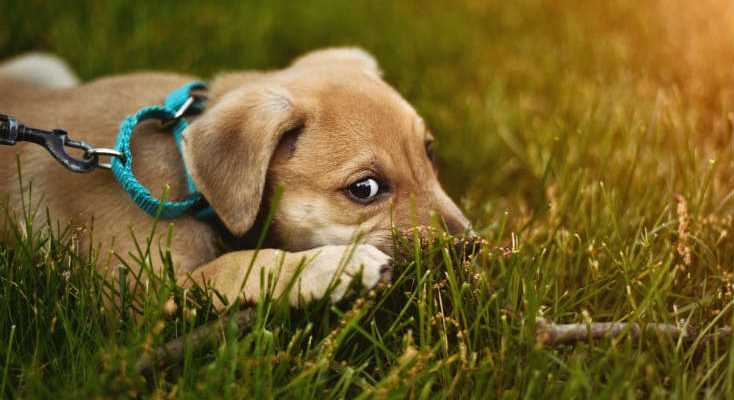
There’s no denying that dogs are one of the best things to happen to mankind. They are often our closest friends and companions. That said, a big part of dog owners’ relationship with their pets is playing with them outside. Sometimes we do this in a park area, but many times we play on our lawn instead.
It’s all fun and games, but active and playful pups can cause a lot of wear and tear on a yard, creating bare patches wherever they play or do their business. That being the case, choosing well from a number of grass options including artificial grass for your lawn can ensure that it takes the least amount of damage possible from your dogs.
In order to choose the best type of grass, you need to consider its durability and whether or not it is safe for your dog to be around.
What Damage Can Pets Do to Lawns?
It’s fun, but whether your dog is tearing up the lawn or doing their business on it, owners know that their dogs can inflict some serious damage on any lawn.
Canines that like to spend a lot of time outside running, digging, and rolling in grass and flower beds can cause the yard to become bare.
Of course, there’s more than one type of grass out there, and choosing the best breeds of grass available can reduce how much havoc your dogs wreak on the lawn.
Visual barriers like shrubbery may help direct dogs away from areas that need time to recover, but that’s not a real solution to the problem, especially when you consider all the rough play and the bathroom waste.
Pets can pose a threat to our lawns with their bathroom habits. Dog urine can be especially acidic with a pH higher than 7, which can burn grass blades in the affected area.
How Can You Prevent Your Dog’s Urine From Killing Grass?
Urine from any animal is nothing but waste the body couldn’t use. So as you can imagine, it doesn’t do any type of grass any favors. It’s effectively poison to grass blades, but aside from picking a resilient type of dog grass, there are some other things you can do to keep to keep brown spots from developing on your lawn.
Just like humans, hydration is a big part of this. Keeping dogs hydrated with plenty of water can help dilute the acidic levels in urine and thus protect the grass to an extent.
This means keeping your dog’s water bowl full, and also changing out dirty water as much as possible. Dogs don’t want to drink dirty water any more than humans do.
Of course, even if a dog is hydrated, it’s still urine. Washing down the spot the dog urinated on with a hose is a good way to dilute the toxicity before it can do too much damage.
Unfortunately, feces can also threaten a healthy lawn. While small amounts may have a fertilizer affect and promote green growth, an excess of feces causes an overload of nitrogen into the soil that can burn and kill grass. Quickly scooping up feces as soon as possible can help minimize the damage to the grass.
But no matter what you do, dogs will still go to the bathroom on your lawn somewhere. You can clean it as soon as you can, but it’ll still cause damage.
That’s why it can also pay to train your dog to only go to the bathroom in a certain spot. That way you can minimize the damage to your lawn by limiting it to one place.
Training pets to use the bathroom in a designated area of the yard can help protect grass in the rest of the lawn.
Best Grass for Dogs
Our yard’s are extensions of our dogs’ homes. Selecting a turf that provides them a healthy place to explore and play while also being tough enough to withstand their digging, playing, and bathroom habits is a priority.
That’s why we’ve put this article together in the first place: and exactly why we’ll be covering the various types of grass for dogs, whether you want turf that grows quickly, is suitable pee grass for dogs, or even artificial grass for dogs. Any of these could be suitable for you and your dog, depending on what the canine needs.
Kentucky Bluegrass
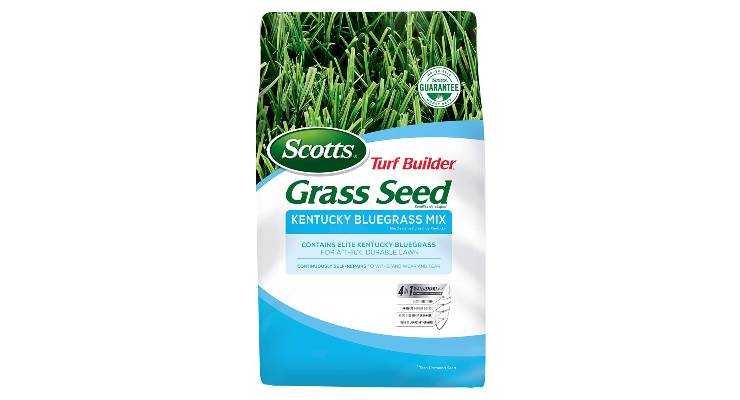
Kentucky Bluegrass is a very common breed in the United States, and it can provide fast-growing, durable turf that thrives in cooler weather. It actively grows and spreads in the spring and fall months, but does require a fair deal of maintenance to keep healthy.
Kentucky Bluegrass is perennial, which means it grows back year after year, most notably in the fall and spring. Compared to all of the different grass types that grow during the cool season, Kentucky Bluegrass is the most resilient against winter weather conditions.
However, this means that this particular grass is most suited to Northern climates, where mild summers and cold winters play to its particular strengths and growth cycle. This is because the grass has a relatively shallow root system, which makes it less drought tolerant than other grass.
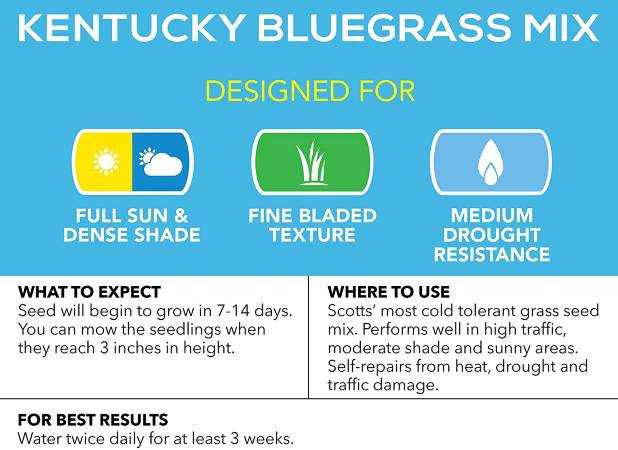
Not to say that Kentucky Bluegrass cannot be used in the south, but it would require much more maintenance and significant irrigation to achieve that. It also requires a great deal of sunlight, though some varieties do fine in light shade.
As for what this grass has to offer for your dog, it is great for withstanding and repairing urine spots, thanks to the rhizomes in it that drain and absorb urine, as well as promote rapid growth.
On top of that, it’s a sod forming grass. It spreads very quickly through its roots and is therefore capable of repairing any damage very quickly.
Summary
- A perennial grass that flourishes in cold weather but goes dormant in warm weather
- Grows very quickly, so it recovers from urination spots quickly
- Requires lots of sun in most circumstances. Needs a lot of maintenance in warm weather conditions
Perennial Rye Grass
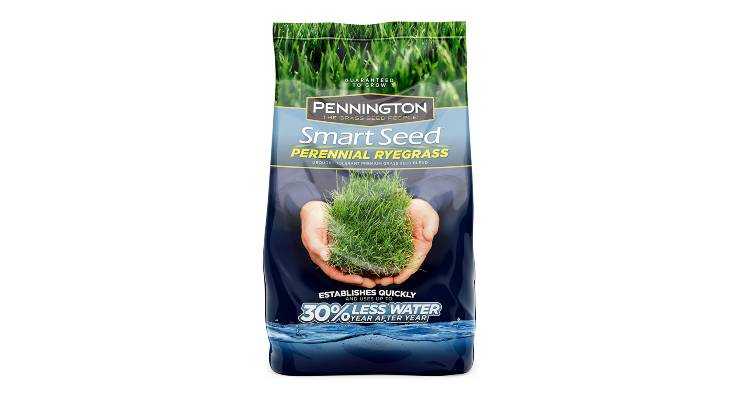
Perennial Rye Grass is not the most popular choice of lawn grasses but not because it’s actually bad. It simply gets overshadowed by some grasses with more notable names.
Perennial Rye Grass is most notable for its very quick germination time: whereas the aforementioned Kentucky Bluegrass can take up to three weeks to even be noticeable, Perennial Rye Grass is ready to be mowed in that same amount of time.
Because of this, the grass is often used to help other grass options grow, by providing them with shade.
That said, it is still a good choice for a lawn in and of itself. It’s very resilient and even has natural resistance to pests and disease. It does quite well in cool temperatures, but can thrive just fine in warm conditions with enough hydration.

On the negative side of things, Perennial Rye Grass doesn’t spread very well, because it lacks the same root system as many other grasses. This means it grows in clumps, and bare spots are quite common. Lawns will need to be reseeded in barren spots to get an even and good-looking lawn.
That said, the almost unmatched speed of growth makes it great for a high traffic lawn frequented by dogs. If any bare patch is made by dog poop or other damage, this season grass will grow back in no time flat with its astounding growth rate. By that merit alone it is a top contender for dog grass.
Summary
- Grows very quickly: ready to mow in three weeks
- Thrives in cool weather but survives in warm weather with good hydration
- Doesn’t spread as easily as some other grasses, lawn needs to be reseeded often
- Rapid growth speed means it recovers from urine spots and other damage quickly
Zoysia Grass

Zoysia Grass is the first breed on this list that is a warm season grass. It takes longer to grow than some other varieties but can tolerate extremely warm temperatures and doesn’t require a whole lot of maintenance.
Once it is established, it is extremely dense and disease resistant, making it tough enough to endure high traffic from both people and dogs.
The most noteworthy aspect of Zoysia Grass is its versatility in weather zones.
Whereas other types of grass thrive primarily in warm or cold weather and require heavy maintenance in the opposite type of weather, this grass type is at a nice middle ground, capable of thriving in both cold and warm weather with relatively little maintenance.
This makes Zoysia Grass a popular choice for not only southern states, but also the transition zone, where the weather can be both warm and cool. It doesn’t stay green all year-round, but it does stay green much longer than most other grasses do when winter sets in.
Thanks to the rhizomes and stolons, it also spreads very quickly and evenly and your lawn won’t have to be reseeded very often.
As for dog-related benefits, Zoysia has very deep roots, and it stores water very well. When it gets watered, it recovers from damage very quickly, and this includes bare spots created by dog urine or dog poop.
Summary
- Zoysia Grass grows well in warm environments, but is also hardy in cold environments
- Doesn’t require much water because the deep roots store water well
- Quickly recovers from damage even with relatively little care
- Spreads quickly and evenly across your lawn
- Takes longer to grow than other grass for dogs
Turf-Type Tall Fescue
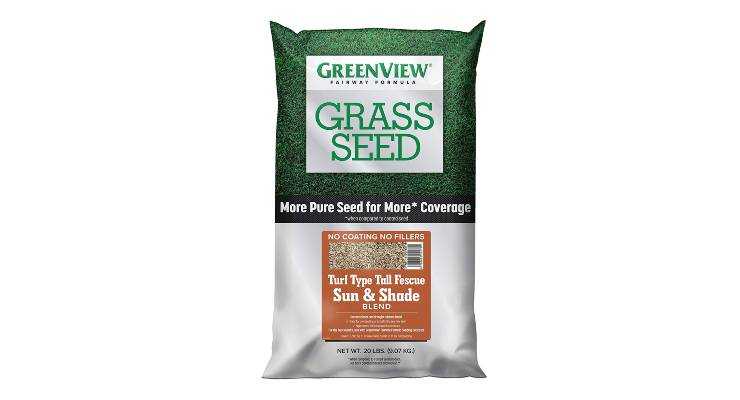
A newer breed of grass, the Turf-Type Tall Fescue is known for its durable turf and is tougher than most typical lawn grasses. It is one of the most resilient grasses out there, with grass blades that are resistant to just about everything.
With a dense root network, it is resistant against drought. The grass itself is both sun and shade tolerant, so you can grow it in nearly any area. It even processes a naturally occurring fungus that keeps insects away, and it can stay green all year-round if it is given the proper care.
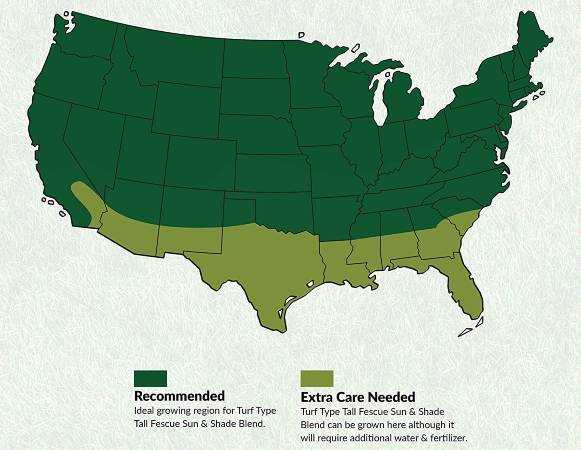
But for all of its strengths, Tall Fescue does have one weakness in the fact that it is a clump forming grass. Basically, it grows in little bunches, rather than spreading out horizontally. This makes it easy to keep out of an area you don’t want it in, but also means it is a little harder to cover your whole lawn with it. You’ll have to keep checking the lawn for bare spots and reseed them to get an even lawn.
Unfortunately, this means that Tall Fescue can’t repair itself as easily as some other grass, but because it is so resilient to damage to begin with, this isn’t a huge problem, as it can survive most weather or any time your dog runs over it.
Summary
- Extremely resilient to cold, heat, droughts and physical damage
- Sun and shade tolerant, and has natural insect repellant
- Doesn’t spread very well, so it repairs from damage slowly, but doesn’t take much damage to begin with
Bermuda Grass
However, it is a warm season grass and is not suitable for cold climates, so its area of use is limited. It requires a fair deal of maintenance, but if properly taken care of it has very high resistance to salt, heat and drought conditions. Of all the warm weather grasses, this breed grows the fastest, and it spreads very quickly.
Like the other options on the list, that fast growth rate allows it to repair from damage with ease, so a dog run across the yard won’t be too much trouble even if it tears up a bit of dirt.
Because the grass grows very quickly, it may require frequent maintenance, such as fertilization or mowing twice a week. But that maintenance will provide you with great grass for dogs and aesthetics.
Summary
- Grows very well in warm climates: not suitable for cool climates
- Grows extremely quickly, which requires a lot of maintenance but also repairs damage fast
- Has great resistance to drought, salt and heat
Mixing the Best Grass for Dogs
Some types of rye grass can be over-seeded with other grasses to offer an extra measure of protection and durability, but the seeding will take a few months to set.
Once it is established, this combination of grasses is extremely tough, making it an excellent option for homes with multiple pets.
If you are buying your seeds from a physical store, it might pay to ask which seeds can be mixed with one another to create the most durable lawn. The experts are well-aware of these practices and can guide you through the process as you will.
Native Grasses
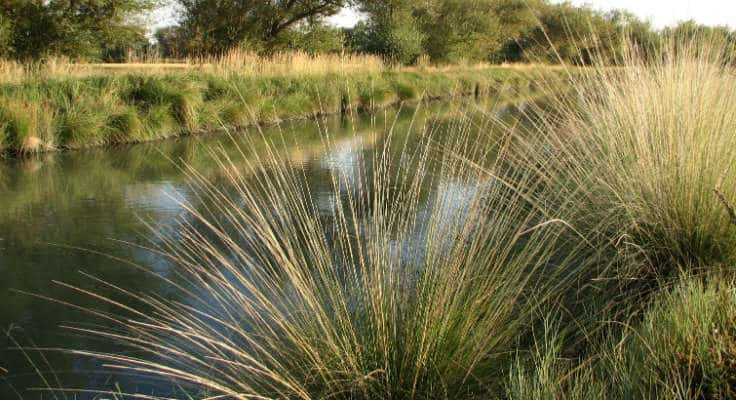
While specially bred and grown grasses are often useful for your yard, that doesn’t mean they are the only option. You could also use native breeds such as deer grass in your yard.
Any grass that is native to your area is bound to flourish in that area, and you can bet it won’t cause too much harm to your dog.
However, these native breeds aren’t specially bred and may lack some desirable characteristics, so it’s important to get an expert opinion on the validity of native grass before using it.
The Best Alternative: Artificial Grass for Dogs
Searching for a pet-friendly grass seed can be daunting. It requires several weeks for new grass seed to establish and can be costly when re-seeding an entire lawn. Not to mention, real grass requires frequent maintenance and most breeds go brown at some point or another. This is where artificial grass comes in.
Artificial grass for dogs gives you a way of making a mostly maintenance free yard, or you can use it to just establish a single patch or area for your dog to go to the bathroom in.
Many manufacturers offer hydroponically grown patches of grass that are dirt free and others offer artificial turf for dogs to use.
Employing the use of these handy grass patches can help protect lawns and gardens from the destructive effects urine and feces can have on a yard, and they take much less time to implement than growing your own grass.
Dog grass patches are a great option for pet owners who work long hours and must leave their pets unattended for long stretches of time, or for those who live in apartments or cities where lawns are not common.
The grass patches are also handy while waiting on new grass seed to establish or during the 24-hour waiting period after fertilizing the yard.
Best Artificial Grass for Dogs
Forest Grass Artificial Turf Grass
The Forest Grass Artificial Turf Grass is available in sizes as small as 16.5 square feet and as large as 91 square feet.
It consists of eco-friendly, non-toxic synthetic materials that give it a natural look. The backing is coated with rubber that prevents it from sliding, as well as drainage holes.
It can be washed periodically with soap and water or with cleaner and has a 14-year warranty.
Of course it probably wouldn’t hold up to scrutiny up close, but at a distance this artificial grass looks good and provides your dog with a spot to do their business without causing any damage to real grass.
PETMAKER Puppy Potty Trainer
The PETMAKER Puppy Potty Trainer is advertised as being an indoor restroom for pets.
Available in different sizes, it features three layers – an odor resistant, antimicrobial mat on the top, a plastic insert, and a collection tray on the bottom.
The removable tray makes cleaning up easy and all layers can be cleaned with soapy water.
It’s worth noting that this product isn’t artificial grass for dogs so much as an indoor toilet for one, but we’re mentioning it here anyway since it serves the purpose of giving you a means for your dog to go to the bathroom without damaging a yard.
Doggie Lawn Disposable Dog Potty
The Doggie Lawn Disposable Dog Potty is an all-natural alternative that features real grass. Free training consultation is available with this product.
Since this item has real grass, it may be a good option for training pets to use the bathroom in a designated area of the yard to protect the rest of the yard.
Of course, this isn’t artificial grass for dogs either, which means it’ll have some of the same drawbacks as real grass, such as you having to plant in or take care of it.
However, it is a great way to start your dog on going to the bathroom in the right place, so it may serve as a better training tool than artificial grass if you want your dog to ultimately go to the bathroom outside.
Keep Your Pet Safe
While there are many things you can do to limit the damage your dog causes to your lawn, one of the best things you can do is select artificial grass or a particular type of grass for your lawn.
Choosing the right kind of grass means more than just being resilient against dog rough housing and waste: it has to be safe for your dog too. You don’t want something that may harm your dog, however slightly.
Of course, you may be wondering how grass could possibly hurt dogs, but it is possible.
Before the grass even sprouts, you have to take into consideration that the seeds are very small and pointed, making it easy for dogs to get them embedded in their skin and feet. If consumed, the seeds can lodge in the digestive tracts or internal organs. If inhaled, they can get lodged in their lungs or throat.
To avoid those travails, you should bury grass seeds approximately 1/8″ into the soil to help prevent direct contact between them and your pet. But even if you take this precaution, you should still try to keep pets away from the planted area until the grass has started growing.
It’s also very important to keep fertilizers in mind. You want grass that grows quickly, and may feel inclined to use fertilizer to achieve that.
But some fertilizers used on newly planted grass can also be dangerous for pets, as many of them contain toxic herbicides, fungicides, and pesticides that are life-threatening if consumed.
Even compounds like nitrogen that are present in fertilizers can have a poisonous effect when consumed in large amounts.
Keep pets away from any fertilized areas for 24 hours after application.
If you are still planting real grass, then it’s not that you should stay away from fertilizer, but rather that you should consider special type of fertilizer that boosts growth rate without being toxic.
Naturally there are certain special fertilizers out there that are safe for use around dogs, but if you would prefer to make use of a natural fertilizer for your lawn, seaweed or composted manure are all-natural and much safer for a dog to be around.
That said, it’s not overly difficult to find dog safe or natural fertilizer or special pet safe products at garden stores or appropriate lawn product retailers online. Those would be the places to look if you need a dog lawn for your beloved pets.
Conclusion – Do Your Research
We all want to be able to spend time outside with our dogs. But we also want to have a yard that looks good, and between the times when a dog runs through the grass or when they go to the bathroom, that can be hard to do. There’s a few things to keep in mind from this article to help you make the right decision when it comes to the top grass for your yard.
Don’t forget to keep the lawn healthy, when the grass is strong, it can last longer even when your pets love to threat them with their wet habits. The best tools are out there to make it happen, like cordless lawn mowers, lawn sweepers and others.
Frequently Asked Questions (FAQs)
Do you want Real or Artificial Grass?
Real grass requires a lot more maintenance than artificial grass, but can have special properties that make them better. And of course, there is just something nice about real grass. If you don’t have a yard it may be necessary to use fake grass, but you could use it outside too. Just keep in mind it doesn’t grow back, so if it gets damaged you’d have to physically replace it.
What Grass to Get Where you Live?
Assuming you want real grass, the area that you live in is a very important factor in the grass you can grow. Different breeds are designed for different climates, and picking the wrong one would be problematic. Make sure you choose a breed that is suitable for your climate, or it will either do poorly or require a lot more care than usual to flourish.
How Fast does it Grow?
The main thing that lets grass recover from damage is its ability to grow new grass in places that need it, and quickly. The various breeds grow at different rates, making some better for long-term durability than others. Of course, the speed of growth isn’t everything: some grasses may grow more slowly but have better resistance to certain hazards or conditions. You should take all of that into consideration when coming to a decision.
How Well does it Spread?
The different breeds of grass have different rates of growth, but they have different means of growth as well. Some spread out very easily, stretching out across an area with ease. Others grow in a more vertical manner than they do horizontal, so they don’t spread as easily. Those that grow outwards quickly will cover a yard with ease, but may grow a little too much, breaching areas you don’t want. Clump growing grass is much easier to control, but you may have to reseed the yard a few times to cover bare spots.



